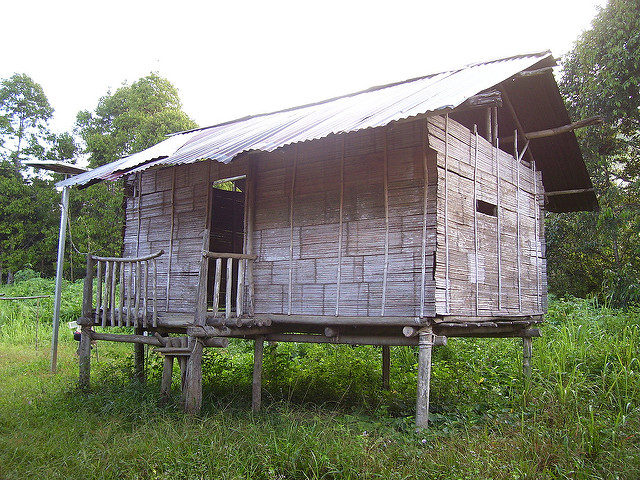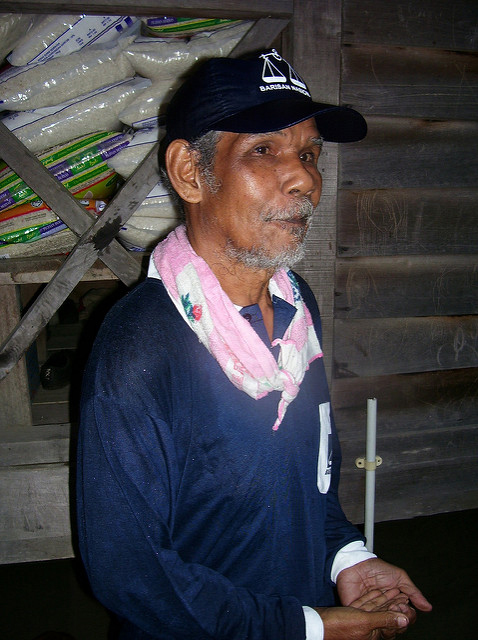A number of Malaysian volunteers, guided by a team of researchers, built a group of four prototype houses for some Semai families that combined traditional forest products with modern construction materials and techniques. A journalist, accompanied by several of the university researchers guiding the project, took a trip by motorcycle along rough forest paths to visit the community and report on it for a Malay news website.

A Facebook post dated January 2 this year provided the backstory in English. The Faculty of Design and Architecture of the Universiti Putra Malaysia was awarded the Volunteer Malaysia prize for their creative house-building project. The construction took place in Perak state between January 2015 and April 2016. The new homes were built using standard construction supplies such as cement, PVC pipes, and metal roofing, but they were combined with natural materials such as wood, bamboo, and palm leaves for the walls. The Prime Minister of Malaysia was present at the awards ceremony. The project included 22 volunteers, both university students and alumni, and 10 members of the faculty and staff. Publicity about the award inspired the reporter to follow up with a visit to the hamlet.
Hartini Mohd Nawi, the reporter, accompanied by Dr. Mohammed Fared and Dr. Wan Mohamed Wan Rihani from the faculty, rode a motorcycle over a steep, narrow forest road in order to reach the Semai village in Kampung Batu 17, Tapah, Perak. A group of Semai were waiting for the visitors at the end of the four-wheel drive access road to accompany them the rest of the way along the motorcycle path to their hamlet. The visitors were told that the path provided the only vehicle access to their community.

One Semai man, Ramli Bang, 50, explained to the author that it takes two hours on foot to reach the community. The primitive road crosses a narrow bridge over a creek and detours around a large boulder before reaching the hamlet. Mr. Nawi compared the experience to riding a roller coaster. A helicopter landing spot has been cleared near the end of the path in case of emergencies.
A resident of one of the newly constructed houses, Baduk Bang, 52, told the author that he was happy, comfortable, and inspired by living in a home that had been built with modern construction methods and materials but which also included local forest products.
Another resident, Bahdik Bahlih, 47, said that he was more comfortable in his new home than in the earlier one. He emphasized how pleased he was with the new property. He added that he likes to catch butterflies and sell them to buyers in the Cameron Highlands to supplement his income. Along the rough road back out of the hamlet, Ramli Bang discussed with the visitors the unique qualities of the forest they were driving through.